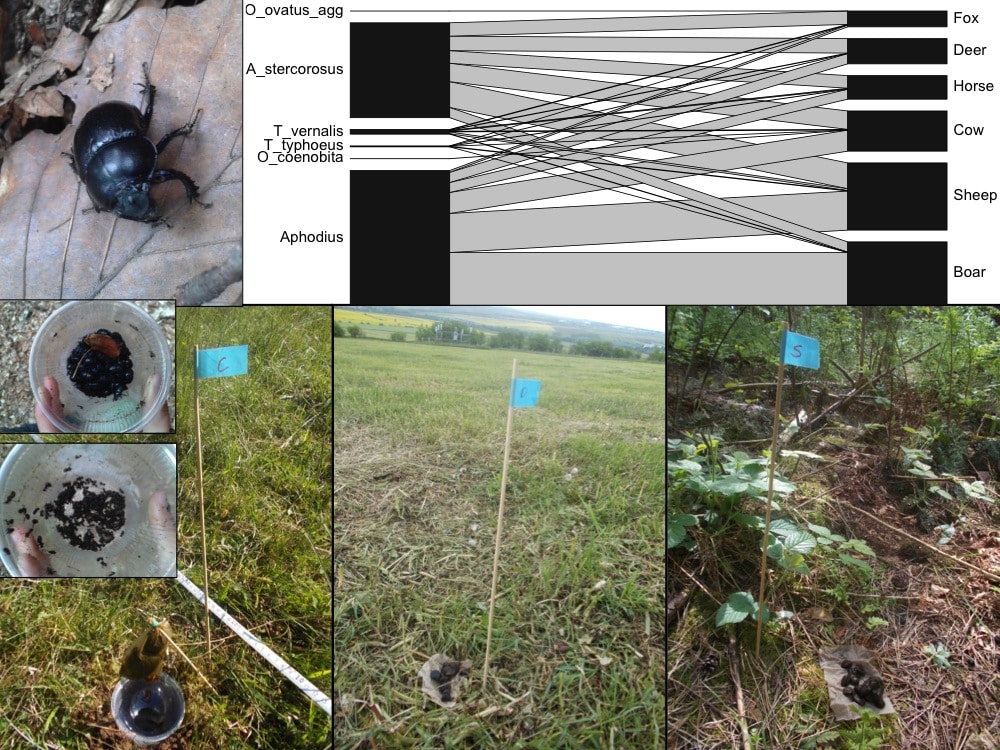Land-use responses of dung beetle communities and their ecosystem services
Dung beetle communities contribute to the rapid decomposition of faecal deposits from both wild mammals and domestic livestock, representing a key ecosystem service. We will assess dung beetle community composition and removal rates for cow, sheep, horse, wild boar, deer and fox dung in all experimental plots in forests and grasslands.

We predict that dung removal increases both with the density and biodiversity of beetles. Local livestock density and composition as well as other forms of land use may affect dung beetle activities. While dung contamination by veterinary parasiticides is known to negatively affect beetle performance, dung decomposition may be more resilient in more diverse beetle communities.
Beetles utilize dung volatiles, which are partly degradation products of nutritional ingredients, as cues to find suitable resources. Differences in nutrient and volatile composition may thus explain variation in activity and specificity of beetles across different dung types, which will be investigated with dung and odour traps. Key kairomonal cues will be identified and investigated in field experiments. Their significance as predictors for dung beetle preferences will be tested.
The following methods are employed to survey the dung beetle abundance, community composition and dung decomposition rate in all 300 EPs (grasslands and forests) and to understand the preferences of dung beetles for certain types of dung. Six dung types are used: cow, sheep, horse, wild boar, deer and fox.
- Dung-baited pitfall traps: dung beetles are attracted by the scent emissions of small dung samples in tea bags and fall into a cup. Beetles are collected after 48 hours.
- Laid-out dung piles: dung removal rate per 48 hours is quantified. Many dung beetles bury dung into the soil during this time.
- Chemical analyses (nutrients, volatiles) and scent-baited pitfall traps










